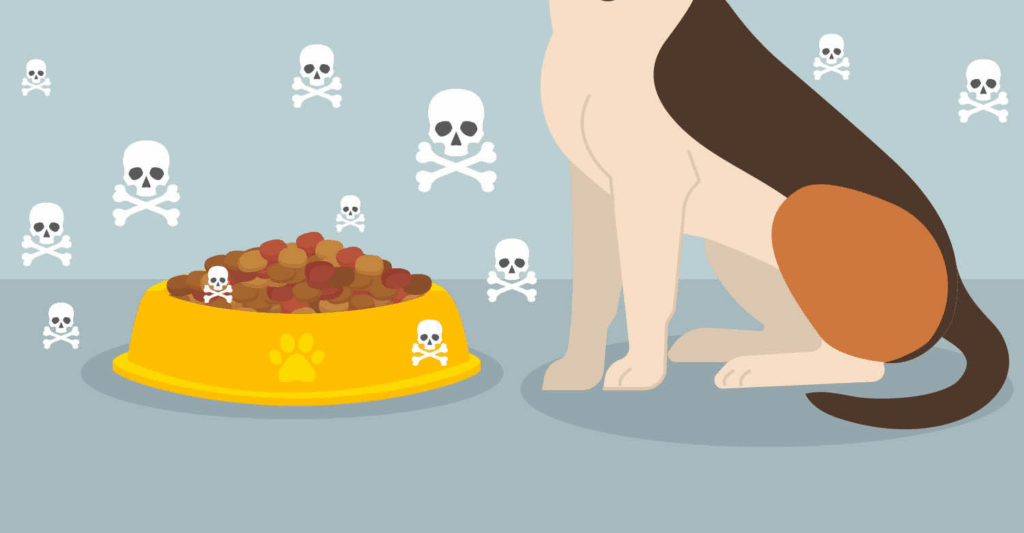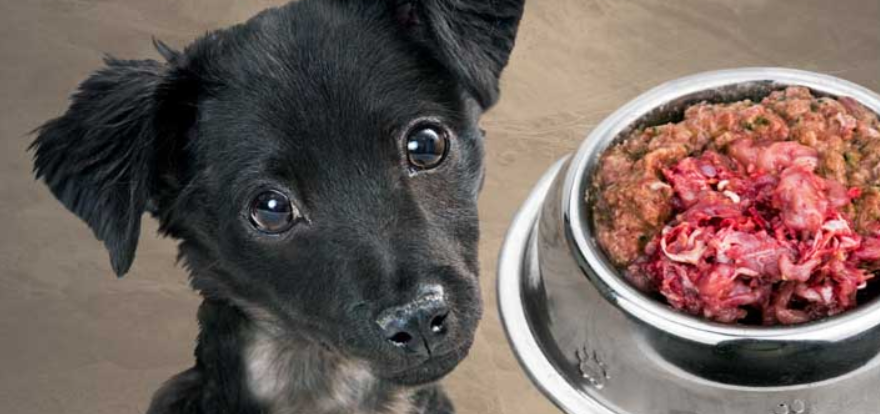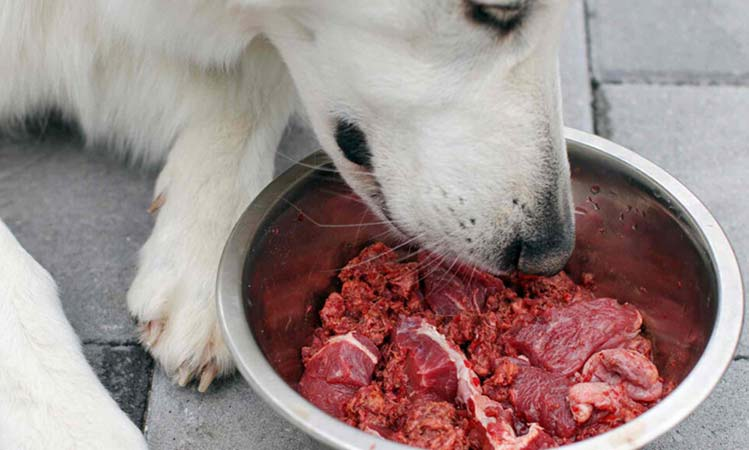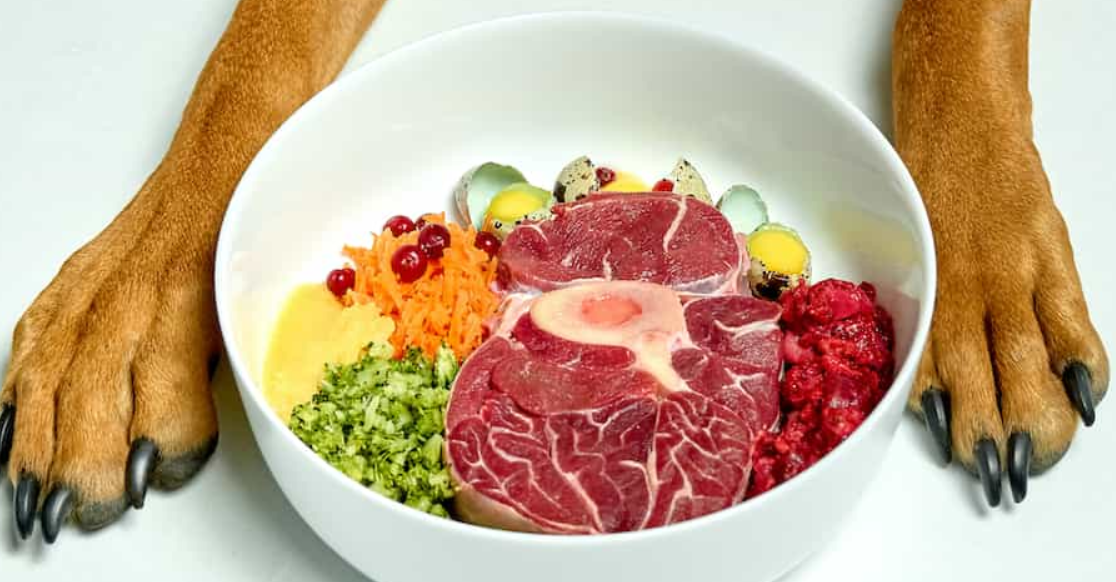Does Eating Beef Cause Cancer in Dogs? Discover the Facts
- Understanding the Role of Diet in Canine Cancer Development
- Examining the Evidence: Beef Consumption and Canine Cancer Risk
- Nutritional Benefits of Beef in a Canine Diet
- Potential Risks Associated with Processed and Overcooked Meats
- Differences Between Raw, Cooked, and Processed Beef in Dog Diets
- Red Meat vs White Meat: Comparative Risks in Canine Cancer
- Role of Genetic Predisposition in Canine Cancer Risk
- Immune Function and the Impact of Diet on Inflammation
- Common Types of Cancers Potentially Influenced by Diet in Dogs
- Environmental and Cooking Factors That Exacerbate Risk
- Comparative Risk Analysis — Raw vs Cooked vs Processed Beef
- Beef in Commercial Dog Foods: What to Watch For
- Long-Term Consumption Patterns and Cumulative Dietary Risk
- The Role of Antioxidants and Protective Nutrients
- Veterinary Guidelines and Breed-Specific Nutritional Needs
- Comparative Overview: Beef, Cancer, and Benign Conditions in Dogs (таблица)
- Frequently Asked Questions

Understanding the Role of Diet in Canine Cancer Development
Cancer in dogs, much like in humans, is a multifactorial disease that emerges from a complex interaction of genetic, environmental, immunological, and dietary influences. While no single food ingredient is likely to be the sole cause of cancer, certain dietary patterns can significantly contribute to carcinogenic processes. Diet serves as both a source of essential nutrients and potential exposure to harmful substances. When considering whether beef plays a role in cancer development, it is essential to recognize that what dogs eat daily either strengthens their defenses or silently fuels mechanisms like chronic inflammation, oxidative stress, and hormonal imbalance—all of which are known contributors to neoplastic transformation.
In canine oncology, an increasing number of studies and clinical observations suggest that the type, quality, and preparation of food may either promote or inhibit tumorigenesis. High-protein diets, when balanced and derived from clean sources, are generally beneficial, but the story changes when that protein comes from overcooked, oxidized, or highly processed red meat. Moreover, how beef is combined with other dietary elements—such as antioxidants or fiber—may either buffer its risks or magnify them. Understanding this broader context allows owners to make smarter, evidence-based decisions about including beef in their dog’s diet.
Examining the Evidence: Beef Consumption and Canine Cancer Risk
The veterinary literature exploring the connection between beef consumption and cancer risk in dogs is still emerging, but several observational and experimental studies provide useful insights. One of the more cited works is a retrospective study published in the Journal of Veterinary Internal Medicine, which reported a higher incidence of mammary tumors in unspayed female dogs that consumed high-fat, red-meat-based diets. While this does not prove causation, it supports a hypothesis that dietary fat and meat type may influence hormone-sensitive tumor development.
Another area of concern involves the potential mutagenic properties of compounds formed during high-temperature cooking of red meat—such as heterocyclic amines (HCAs) and polycyclic aromatic hydrocarbons (PAHs). These substances are well-documented in rodent models to cause DNA mutations and initiate tumor growth. In dogs, long-term exposure to such compounds—through grilled beef scraps, for example—may theoretically contribute to similar risks, especially in breeds already predisposed to cancer.
Nonetheless, current scientific consensus emphasizes moderation, diversity, and preparation quality rather than vilifying beef itself. Correlation studies must be interpreted cautiously, as they often involve confounding factors such as breed, activity level, other dietary inputs, and environmental exposures (e.g., pesticides or air pollutants), all of which also affect cancer risk in dogs.

Nutritional Benefits of Beef in a Canine Diet
When sourced responsibly and prepared appropriately, beef can be one of the most valuable protein sources in a dog’s diet. It is naturally rich in essential amino acids, which support tissue repair, muscle development, enzyme synthesis, and immune function. Beef also provides critical micronutrients such as vitamin B12 (which supports neurological health), vitamin B6 (important in hormone regulation and immune modulation), iron (needed for oxygen transport in the blood), and zinc (a cofactor in over 300 enzymatic reactions).
In addition, grass-fed beef is a notable source of conjugated linoleic acid (CLA), a fatty acid with documented anti-carcinogenic and anti-inflammatory effects in laboratory animals. CLA has been shown to inhibit tumor growth, reduce angiogenesis (the formation of new blood vessels that feed tumors), and enhance immune response in some animal studies. Although less well-documented in canine cancer specifically, the presence of CLA adds a compelling reason to include moderate amounts of lean beef in a balanced canine diet.
Importantly, these benefits only apply to high-quality, minimally processed beef. Cuts with excessive fat or additives, or beef subjected to intense heat or chemical preservation, may undermine the very nutritional advantages it offers.
Potential Risks Associated with Processed and Overcooked Meats
Processed meats—such as cured beef, beef jerky, hot dogs, and commercial meat-based treats—pose particular risks due to their chemical additives and preparation methods. These products often contain nitrites and nitrates, which, under specific physiological conditions, can form nitrosamines, potent carcinogens linked to gastrointestinal and liver cancers in animals. The risk is compounded when beef is smoked, charred, or heavily seasoned with synthetic preservatives or flavor enhancers, many of which are not regulated for long-term safety in dogs.
Overcooked beef, especially when grilled or fried, can accumulate toxic compounds like HCAs and PAHs. These chemicals are produced when amino acids and creatine in muscle meat react at high temperatures. Once ingested, they may form DNA adducts—molecular lesions that can initiate carcinogenesis. Although most studies are extrapolated from human and rodent models, the physiological similarities suggest dogs may be susceptible, particularly if such meats are fed regularly over months or years.
Additionally, repeated heating or reheating of beef (such as microwaving leftovers multiple times) can degrade fats and proteins, reducing their nutritional quality and increasing oxidation levels. Oxidized lipids have been implicated in chronic inflammation and cellular damage, both central features of cancer biology. Avoiding such practices is essential for owners who want to offer cooked meat while minimizing risks.
Differences Between Raw, Cooked, and Processed Beef in Dog Diets
The method by which beef is prepared and served plays a critical role in determining its safety and health value for dogs. Raw beef diets—often marketed as “biologically appropriate raw food” (BARF)—aim to replicate a dog’s ancestral diet and preserve nutrients that may be destroyed during cooking. When sourced from hygienic, human-grade suppliers, raw beef can indeed provide excellent nutritional content, particularly in terms of bioavailable proteins, enzymes, and certain heat-sensitive vitamins like thiamine. However, raw diets come with a significant risk of bacterial contamination, including pathogens such as Salmonella, Listeria, and E. coli, which can affect both dogs and humans in the household.
Cooked beef, when boiled, baked, or lightly sautéed, is generally considered safer for most dogs. It eliminates microbial risks while retaining a majority of the protein content. The key is to avoid overcooking, excessive fat, and added ingredients like garlic, onion, or salt—all toxic to dogs. Well-prepared cooked beef is easily digestible and often more palatable, making it a practical option for picky eaters or dogs recovering from illness.
Processed beef products, on the other hand, should be treated with caution. These include commercially dried beef strips, meat-flavored biscuits, and beef-based fillers in low-quality dog foods. These items are typically loaded with sodium, artificial flavors, dyes, and chemical preservatives. They offer little to no nutritional benefit and may pose chronic health risks if consumed regularly. For this reason, veterinarians generally recommend avoiding processed beef altogether, especially in cancer-prone breeds.
Red Meat vs White Meat: Comparative Risks in Canine Cancer
There is growing interest in the comparative impact of red meats (like beef) and white meats (like chicken or turkey) on cancer development in dogs. Red meats contain higher levels of iron and creatine, which, when oxidized, may produce reactive oxygen species and N-nitroso compounds—substances linked to carcinogenesis in laboratory models. White meats, on the other hand, generally contain lower levels of these compounds and fewer saturated fats. However, red meat also has potential benefits such as higher zinc and CLA content, which may offer protective effects. The balance between risk and benefit often hinges on preparation, portion control, and overall dietary context. Notably, just as some human treatments such as Sermorelin have potential side effects that alter hormone-regulated tissue growth and have been studied in relation to cancer progression in animals, nutritional inputs like red meat may influence the biological pathways involved in tumor formation.
Role of Genetic Predisposition in Canine Cancer Risk
Certain dog breeds have a naturally higher predisposition to specific cancers, regardless of diet. Golden Retrievers, Boxers, Bernese Mountain Dogs, and Rottweilers are known to be at greater risk for lymphoma, osteosarcoma, and hemangiosarcoma. These genetic predispositions may amplify the effect of environmental and dietary factors, including beef consumption. In such breeds, a pro-inflammatory or carcinogen-rich diet may accelerate cancer development or lower the threshold for disease manifestation. Conversely, in breeds with low cancer incidence, diet alone may not be sufficient to initiate oncogenesis. Genetic screening, where available, can help identify risks early. For dog owners of at-risk breeds, a more cautious dietary strategy is recommended, including the selective use of red meat, anti-inflammatory supplementation, and regular veterinary surveillance.

Immune Function and the Impact of Diet on Inflammation
A critical connection between diet and cancer involves the immune system. Chronic inflammation is a recognized precursor to various types of cancer, and dietary choices can modulate inflammatory responses. Diets high in processed meats, preservatives, and oxidized fats can elevate systemic inflammation, creating an environment favorable for tumor development. On the other hand, whole-food-based diets rich in omega-3 fatty acids, antioxidants (such as vitamin E and selenium), and bioavailable protein sources like fresh beef may help regulate immune responses and reduce oxidative stress. It’s worth noting that poor nutrition not only increases cancer susceptibility but also impairs recovery and immune resilience during treatment. Incorporating lean, clean beef in combination with anti-inflammatory foods like green vegetables, turmeric, and fish oil may provide a balanced approach. Diet, in this context, acts both as a preventive and a supportive therapeutic tool.
Common Types of Cancers Potentially Influenced by Diet in Dogs
In canine oncology, certain cancer types are more frequently observed and have shown dietary correlations in both clinical and experimental contexts. Among them, mammary tumors, hemangiosarcoma, and lymphoma are the most discussed in relation to red meat consumption. Mammary tumors, particularly in unspayed females, have been loosely linked to high-fat, protein-dense diets, though hormonal status plays a more decisive role. Hemangiosarcoma, a vascular cancer most often affecting the spleen and heart, has been studied for its association with oxidative stress, which can be influenced by diet composition. Lymphoma has been observed in dogs fed processed commercial foods high in artificial preservatives, though no direct causation with beef itself has been established. Ultimately, while beef can be part of a balanced diet, overreliance on it—especially when processed—may tip the inflammatory balance and create an environment conducive to tumor development.
Environmental and Cooking Factors That Exacerbate Risk
Beyond the meat itself, the way beef is cooked and served plays a major role in modulating its health effects. When beef is grilled, barbecued, or pan-fried at high temperatures, carcinogenic compounds such as HCAs and PAHs can form. These substances are known to cause DNA mutations in mammalian cells and have been documented in association with gastrointestinal and bladder cancers. Additionally, storing cooked meat improperly or reheating it multiple times can increase oxidation, reducing nutrient quality and potentially increasing risk. The materials used in cooking—such as aluminum foil or certain non-stick coatings—may also contribute to chemical leaching under heat. These environmental factors compound dietary risks and must be considered when choosing how to prepare meals for dogs. Interestingly, the way tissues respond to local environmental damage, such as chronic exposure to irritants or oxidants, mirrors the pathology seen in breast cancer skin metastases, where inflammation and dermal damage play a central role.

Comparative Risk Analysis — Raw vs Cooked vs Processed Beef
| Beef Type | Nutritional Quality | Microbial Risk | Carcinogenic Potential | Veterinary Recommendation |
| Raw (fresh) | High (if balanced) | Moderate–High | Low (if not oxidized) | Acceptable with proper hygiene |
| Cooked (boiled/baked) | Moderate–High | Low | Low | Generally safe and recommended |
| Cooked (grilled/fried) | Moderate | Low | Moderate–High | Limit use; avoid charred edges |
| Processed (sausages, treats) | Low | Low–Moderate | High | Not recommended for regular use |
This table highlights how different forms and preparation methods of beef impact a dog’s health. The goal is not to demonize beef, but to use it intelligently, based on veterinary nutrition guidelines and the specific needs of the individual dog.
Beef in Commercial Dog Foods: What to Watch For
Many commercial dog foods contain beef as a primary protein source, but the quality and form of this beef can vary significantly. Some premium brands use whole beef cuts or dehydrated beef muscle meat, which retain nutritional integrity and are well-tolerated by most dogs. However, lower-end brands may rely on beef by-products, meat meals, or hydrolyzed proteins, which often lack clarity in sourcing and may be exposed to high processing temperatures that degrade protein quality. Additionally, commercial beef-based formulas may include artificial flavors, preservatives, and texturizers, all of which can contribute to systemic inflammation or allergic reactions. Pet owners should carefully read labels, focusing on ingredient sourcing, cooking methods, and presence of fillers or additives. Opting for brands with transparent sourcing and limited ingredient lists can help reduce the cumulative risk of diet-related health complications.
Long-Term Consumption Patterns and Cumulative Dietary Risk
The impact of beef on cancer development in dogs is not solely dependent on a single meal or food type but rather on long-term consumption patterns. Chronic overconsumption of beef—especially in its processed or overcooked form—can contribute to systemic inflammation, oxidative damage, and gastrointestinal stress over time. These processes, while subtle initially, can accumulate and tip the balance toward malignant cell transformation in predisposed individuals. Dogs that receive daily beef-based meals without dietary rotation may also experience micronutrient imbalances or excesses in saturated fats and iron, both of which have been linked to increased cancer risk. Moreover, such monotony may reduce dietary fiber intake, negatively affecting the gut microbiome—a key player in immune regulation and cancer defense. Just like in humans, canine cancer risk is rarely due to a single factor; instead, it’s the result of an intricate interplay of genes, environment, and nutritional consistency across the lifespan.
The Role of Antioxidants and Protective Nutrients
In contrast to pro-inflammatory dietary components, some nutrients can offer protective effects against cancer by supporting cellular repair, detoxification, and immune modulation. Antioxidants such as vitamin E, vitamin C, selenium, and beta-carotene play a crucial role in neutralizing free radicals that cause DNA mutations. Phytochemicals found in plant-based additions—like flavonoids, polyphenols, and chlorophyll—also show anti-tumor activity in laboratory models and are increasingly being integrated into canine cancer prevention strategies. Even within beef itself, conjugated linoleic acid (CLA) has shown some promise in reducing tumor growth in animal studies. However, its benefits are highly dependent on beef source and fat content, as CLA is most concentrated in grass-fed animals. Ultimately, a nutritionally diverse diet that includes lean beef alongside fruits, vegetables, and omega-3 sources like fish oil offers a more holistic and preventive approach to cancer risk.
Veterinary Guidelines and Breed-Specific Nutritional Needs
Veterinarians do not universally prohibit beef in canine diets but do emphasize tailoring it based on breed, age, activity level, and medical history. Large breeds prone to osteosarcoma or hemangiosarcoma, such as Great Danes or German Shepherds, may benefit from controlled protein intake combined with enhanced antioxidant support. Small breeds with dental issues may struggle with tougher cuts of beef or risk consuming processed beef treats that are high in salt and preservatives. Senior dogs often require reduced caloric intake with maintained protein quality, making lean beef a viable option if cooked gently and served in small quantities. Additionally, dogs undergoing cancer treatment—chemotherapy, radiation, or immunotherapy—need easily digestible, high-quality protein sources to support tissue repair and immune function. In these cases, beef can be used therapeutically under veterinary supervision. Dietary planning must remain flexible and responsive to changes in the dog’s condition, lab values, and response to treatment protocols.
Comparative Overview: Beef, Cancer, and Benign Conditions in Dogs
| Condition | Possible Link to Beef | Clarifying Notes |
| Mammary tumors | Moderate (high fat) | More common in unspayed females; fat-rich diets may exacerbate growth factors. |
| Hemangiosarcoma | Indirect | Linked to oxidative stress; high iron from red meat may play a role. |
| Gastric upset | Yes (rich cuts) | Fatty or heavily seasoned beef can cause vomiting, diarrhea, or pancreatitis. |
| Lymphoma | Unclear | Diet may be co-factor; research shows higher incidence with processed diets. |
| Benign lipomas | No confirmed link | Not influenced by diet directly; common in overweight or older dogs. |
| Mucocele-like oral swellings | No | These are mucous cysts, often caused by trauma, not diet-related. |
Understanding the difference between benign and malignant conditions is essential. While beef may influence tumor development in some cases, it does not cause unrelated conditions such as mucocele cancer symptoms, which result from salivary gland duct obstruction, not dietary carcinogens.
Frequently Asked Questions
Can eating beef actually cause cancer in dogs?
There is currently no direct proof that beef alone causes cancer in dogs. However, long-term overconsumption of poorly prepared or processed beef—especially when combined with other risk factors such as breed predisposition, inflammation, or oxidative stress—may contribute to a higher risk of cancer. It is the cumulative effect of dietary patterns over time, rather than beef in isolation, that may influence disease development.
Is raw beef safer or more dangerous than cooked beef for dogs?
Raw beef can be nutritionally valuable but carries a higher microbial risk if not handled properly. Cooked beef is safer microbiologically but may lose some nutrients, and cooking at high temperatures can introduce carcinogenic compounds. The safest approach is to cook beef gently and avoid charring or seasoning it heavily when serving to dogs.
Are some dog breeds more likely to develop cancer from eating beef?
While beef alone doesn’t cause cancer, certain breeds such as Golden Retrievers, Boxers, and Bernese Mountain Dogs are genetically predisposed to cancer and may be more vulnerable to dietary triggers. In these breeds, it’s particularly important to limit processed meats and avoid overfeeding fatty or charred beef.
How does cooking method affect cancer risk in dogs eating beef?
Grilling, frying, or cooking at very high temperatures can produce HCAs and PAHs, which are known to cause DNA damage in mammals. These compounds are not unique to beef but are more likely to form in fatty cuts of red meat. Using moist cooking methods like boiling or steaming is safer.
Does processed beef increase cancer risk more than fresh beef?
Yes, processed beef products like sausages, cured treats, or beef-flavored fillers tend to contain preservatives, artificial coloring, and additives such as nitrites, which are associated with carcinogenic effects. These should be avoided or limited in a dog’s long-term diet.
Can a small amount of beef be included in a healthy diet for dogs?
Absolutely. Lean, unseasoned beef cooked at safe temperatures can be a valuable source of protein, iron, zinc, and B vitamins. It should be balanced with other protein sources, vegetables, and healthy fats as part of a complete dietary plan.
What signs might indicate that a dog’s diet is contributing to health problems?
Digestive issues, excessive weight gain, lethargy, frequent infections, or recurring skin conditions may be early signs of dietary imbalance or inflammation. If these symptoms persist, dietary revision under veterinary guidance is recommended.
Can beef cause tumors or just general inflammation?
Inappropriate forms or excessive quantities of beef may contribute to chronic inflammation, which in turn creates a physiological environment where tumors are more likely to develop. However, beef is not a carcinogen in itself when served properly and in moderation.
Should beef be avoided altogether in cancer-prone dogs?
Not necessarily. The key is moderation and preparation. For cancer-prone dogs, beef can still be used, especially in lean cuts and cooked carefully, as long as the diet is supplemented with antioxidants and anti-inflammatory ingredients to counterbalance potential risks.
Are there alternatives to beef that are less risky for dogs?
Yes, lean white meats like chicken, turkey, and some fish offer high-quality protein with generally lower fat and iron content. These alternatives may reduce oxidative stress in sensitive or at-risk dogs while maintaining nutritional adequacy.
Is beef in commercial dog food safer than home-cooked beef?
It depends on the brand and quality. Premium commercial foods may use controlled processes and high-grade ingredients, but many low-cost options include beef by-products or chemically treated meals. Reading labels and choosing reputable brands is essential.
Can beef be beneficial during cancer treatment in dogs?
Yes, in some cases. Dogs undergoing chemotherapy or surgery often require high-protein diets to maintain muscle mass and immune function. Lean, easily digestible beef can be part of that plan if recommended by a veterinarian and prepared safely.
What are some signs that a beef product may be harmful to dogs?
Excessive sodium, preservatives, artificial colors, strong odors, or hard textures may indicate a poor-quality product. Dogs showing signs of vomiting, diarrhea, itching, or hyperactivity after consumption may be reacting negatively to the product’s ingredients.
Can beef cause oral tumors or mouth issues in dogs?
There is no evidence linking beef to oral cancers in dogs. Oral tumors are typically unrelated to diet and are more often caused by genetics, viral factors, or trauma. Conditions like mucoceles are benign and caused by duct obstruction rather than food.
How can I reduce my dog’s cancer risk while still feeding beef?
Focus on lean cuts, avoid high-temperature cooking, limit processed beef, and combine beef with antioxidant-rich vegetables and omega-3 sources. Rotate proteins to avoid overdependence on any single meat, and consult your veterinarian for breed-specific guidance.










